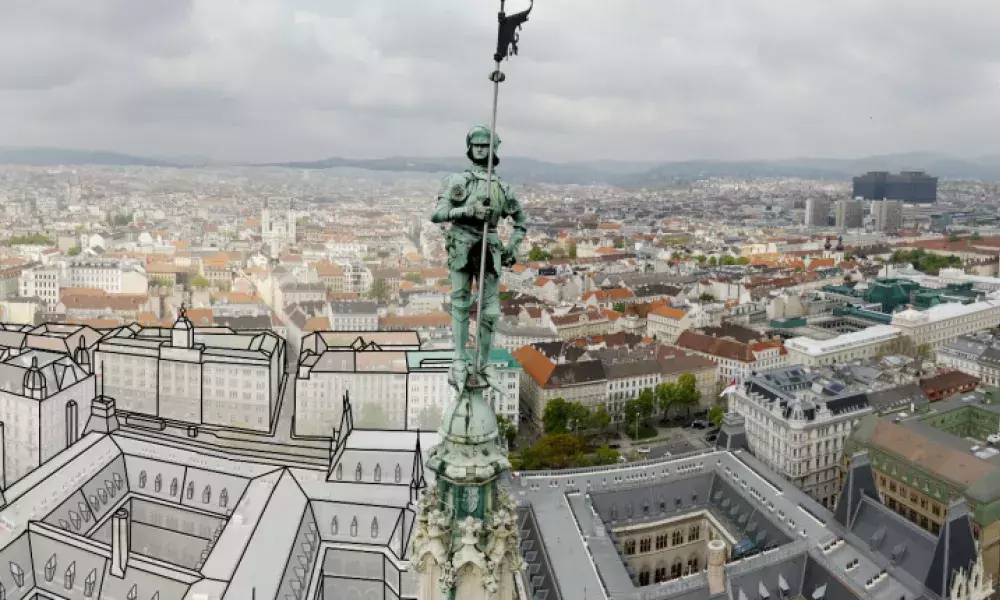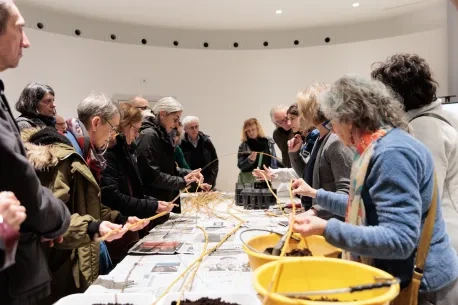BRISE-Vienna: innovation & transformation in cities – the role of the municipal employee

How come, innovation processes in municipalities often end up as reports in a shelf?
During the last 12 years I have seen many cities putting money and manpower to work in order to improve public services, to make city operations more efficient or sustainable, or to come-up with completely new solutions for a quickly changing environment.
While some of these innovation projects have led to great transformations in urban development, many have failed to bring actual change to the city. Besides the numerous and often individual reasons for failed innovation projects, two more general factors stand out - funding and organisation:
- Funding usually occurs from external sources, e.g. EU money or national funding sources. It rarely builds on own municipal funds, which are always scarce and barely suffice to deliver every-day services in high quality. External funding, however, often comes with requirements which are not 100% in line with a full-fledged transformation of city processes. They pay for pilots, prototypes and external communication, so other cities across Europe can learn from them. They usually do not fund larger transformation processes and only occasionally they require a clear transformation strategy as mandatory outcome of the project.
- Organisation of these projects is often ad-hoc (no-one gets active before a grant agreement has been signed, but then everything needs to happen very quickly) and needs to be arranged besides the daily business of city administrations. Innovation projects come on-top for municipal staff who are usually already hitting the limits of their capacity. Since now funding is available, new staff gets hired, who then starts to build a parallel service since it is not familiar with the intricacies of the existing processes, systems, and organisation. This often leads to good prototypes and showcases, since smart, fresh and dedicated employees not only see their chance of improving city services, but also bring in fresh ideas and latest insights from universities and research. However, little happens after the pilots are finished, since service staff was involved too little in the development process and the new way of doing things is incompatible with the old processes and regulations. Soon after the project ends, the staff endowed with the innovation project is frustrated that adoption is not happening and takes off to a new job in an innovative local company. The chance for a real transformation is missed.
So how do you avoid these traps of public innovation projects? How can cities integrate (radical) innovation and a gradual transformation process to make a long-term change in public services?
The secret lies within the existing municipal employees. The staff that has been delivering the services at stake for the last years is the one who decides about the success or failure of an innovation in the public sector.
Be it in planning, operations or interaction with citizens and partners, municipal workers gather knowledge about all necessary details that are to be considered if a new technology or a change in service delivery is to make a lasting impact. The devil is in the detail – this is true particularly for a transformation of public services. The new AI-based technology may be way superior to the old paper-based process, but if it is not able to smoothly integrate into a wider process, it may not bring any benefit. A digital tool for citizen engagement might promise to make participation processes smooth and efficient, but if it fails to comply with participation regulation or has the wrong interface to the public, municipal staff will continue with face-to-face workshops and analogue processes.
Within the BRISE Vienna Project, the City of Vienna demonstrates a promising approach to linking a radical tech innovation for the planning system with an employee-centred approach for long-term transformation. Here Vienna seems to manage, what many others have failed to achieve in the past.
BRISE-Vienna is introducing a set of new technologies to the planning and verification process for new and refurbished buildings. BIM based digital 3D models replace old paper plans, AI-based algorithms enable automated checking-routines for proposed building models submitted by planners and Augmented and Virtual Reality supports an improved digital participation process before the final building permission is granted. All tools are linked together by a radically new building verification and permission process that brings planners and the municipal building authority together in a digitally supported process, enabling them to cooperate more efficiently and to increase the speed of verification and permission by 100%.
UIA is funding BRISE Vienna to build a prototype and demonstrate the general viability of the solution. Just like stated above, UIA funding does not come with a mandatory requirement for a full-fledged long-term transformation; yet, the City of Vienna has set-up the project in a way that long-term success is very likely. The key element for this is the involvement of municipal staff within the product development process from a very early point onwards. While some highly specialized features like the BIM Reference Model or the AI-based checking routines are developed by specialized companies or researchers at the university, employees of the Vienna building authority MA37 have been given active tasks in the project from the very beginning. Not only do they have a say when it comes to the envisaged future process, they dedicate a specific amount of their working time to contributing to the project by training AI algorithms or researching specific building regulations which need to be translated into code. Through this process, incompatibilities between new technologies and old processes are detected early on. Also, the actual staff who will be endowed with implementing the new BRISE Vienna digital planning verification process, is involved in developing the tools to make it successful.
All employees I have talked to recognize the positive and inclusive approach that has been taken by the project management to enable them taking an active role in the innovation process from the beginning. The challenge lies within balancing the new R&D activities and the requirements of everyday business, since – of course – old paper-plan based verification processes keep demanding their attention. Managing this spread of tasks within the team is a question for leadership and management – and it shows why appointing a dedicated project innovation team is easier than integrating innovation into the workload of municipal service staff. BRISE Vienna shows, however, that it is possible and that it promises to be much more rewarding for all actors involved.
So, the next time you are starting an innovation project in a city, ask yourself: "to what extend have I integrated regular municipal staff into the innovation process?"
About this resource
The Urban Innovative Actions (UIA) is a European Union initiative that provided funding to urban areas across Europe to test new and unproven solutions to urban challenges. The initiative had a total ERDF budget of €372 million for 2014-2020.
Similar content




